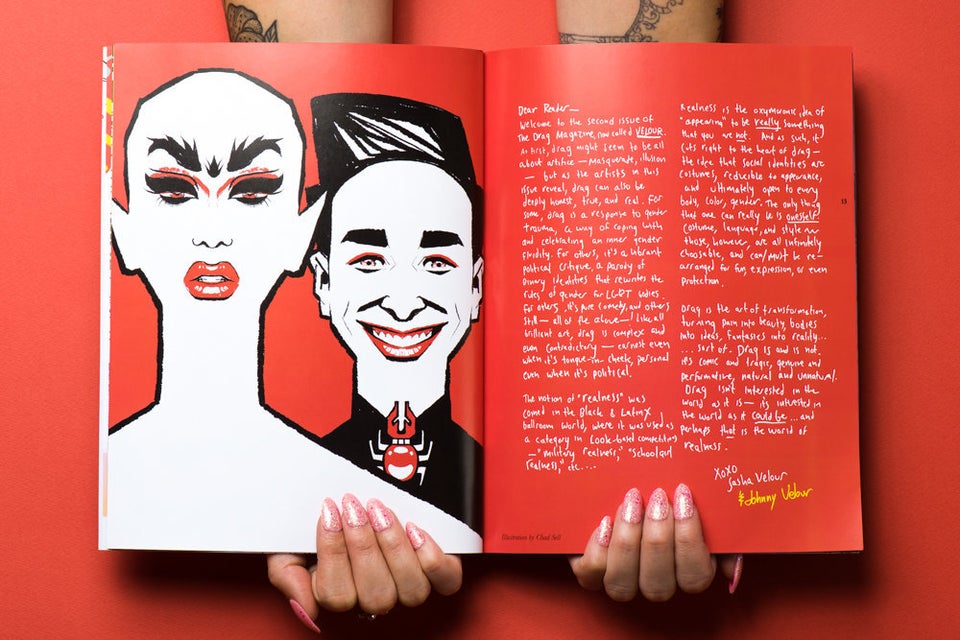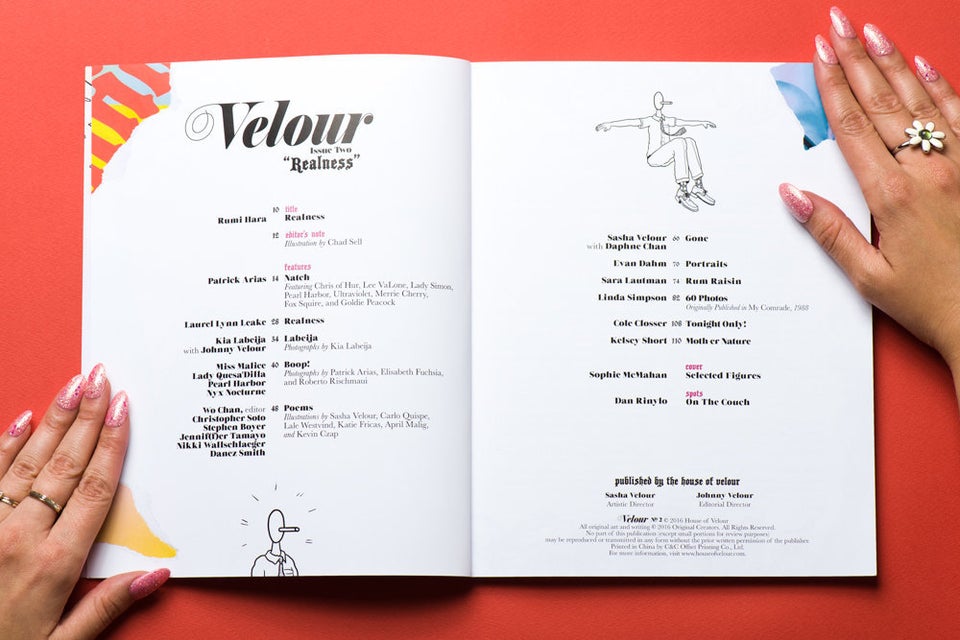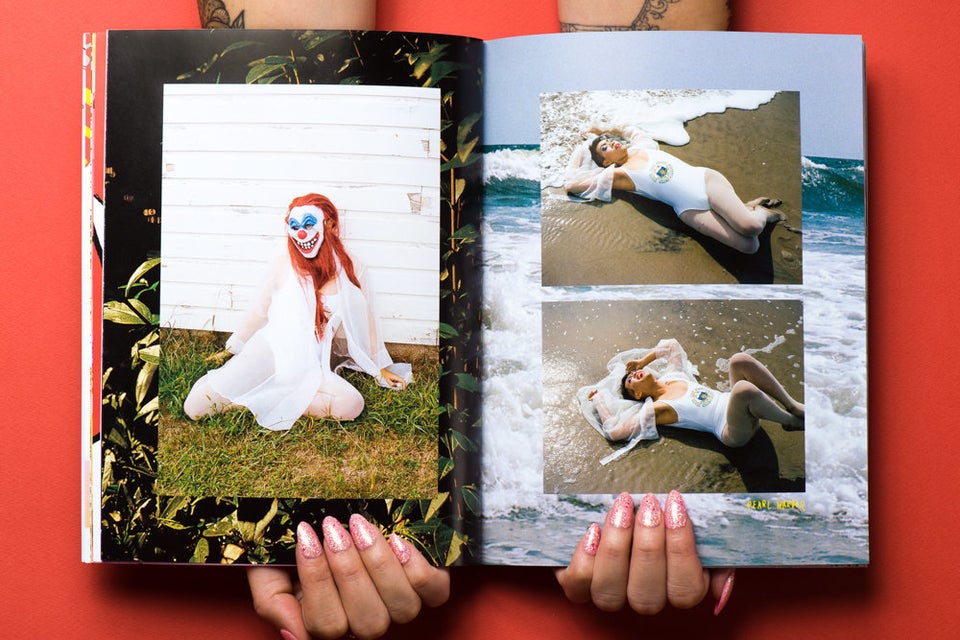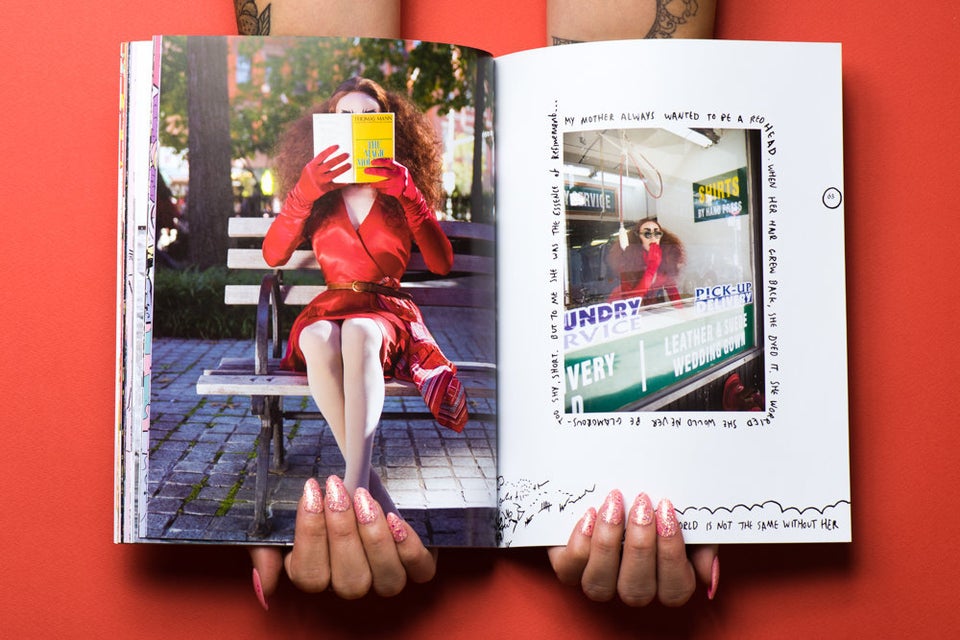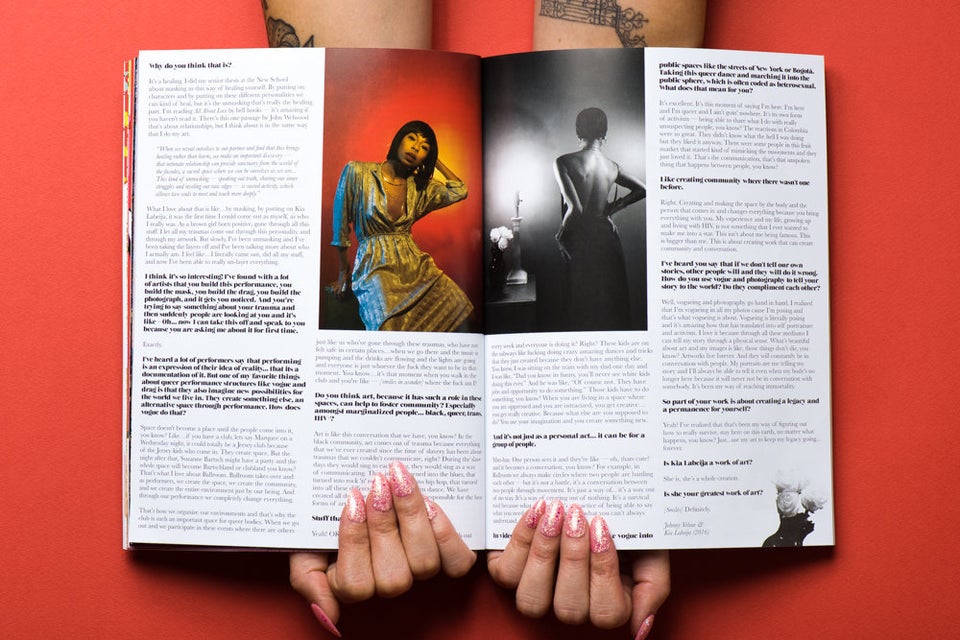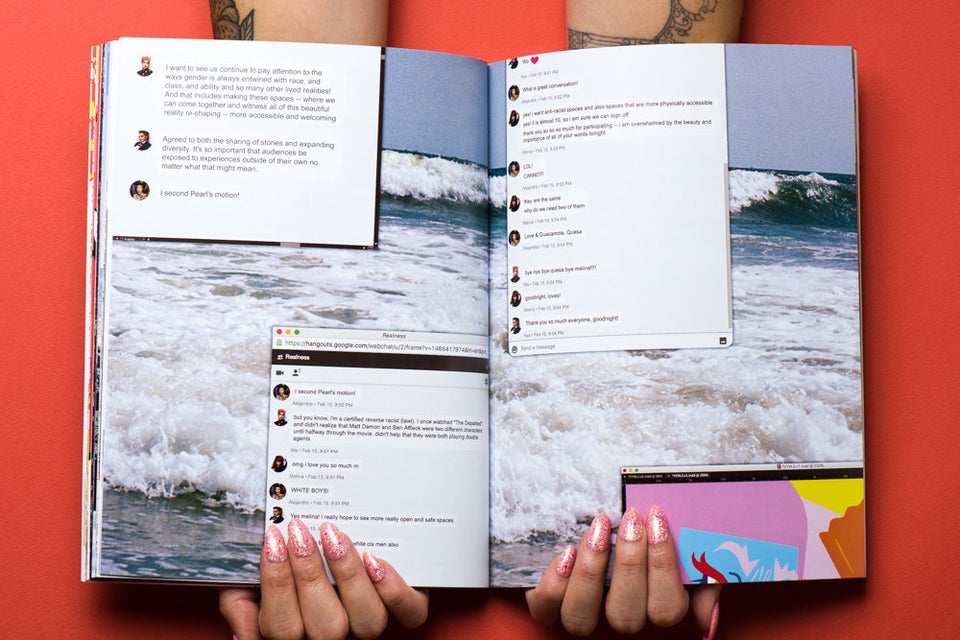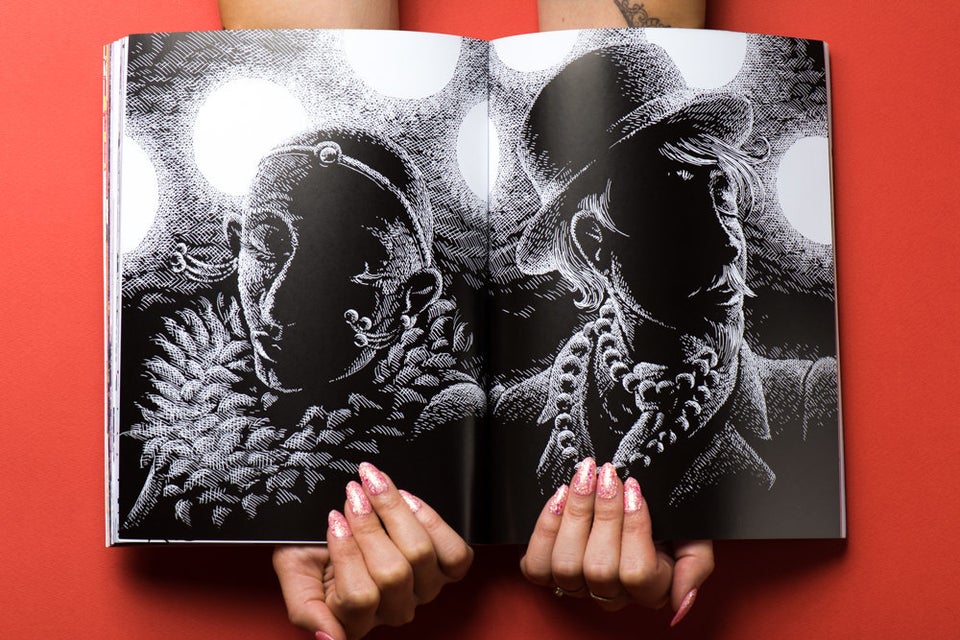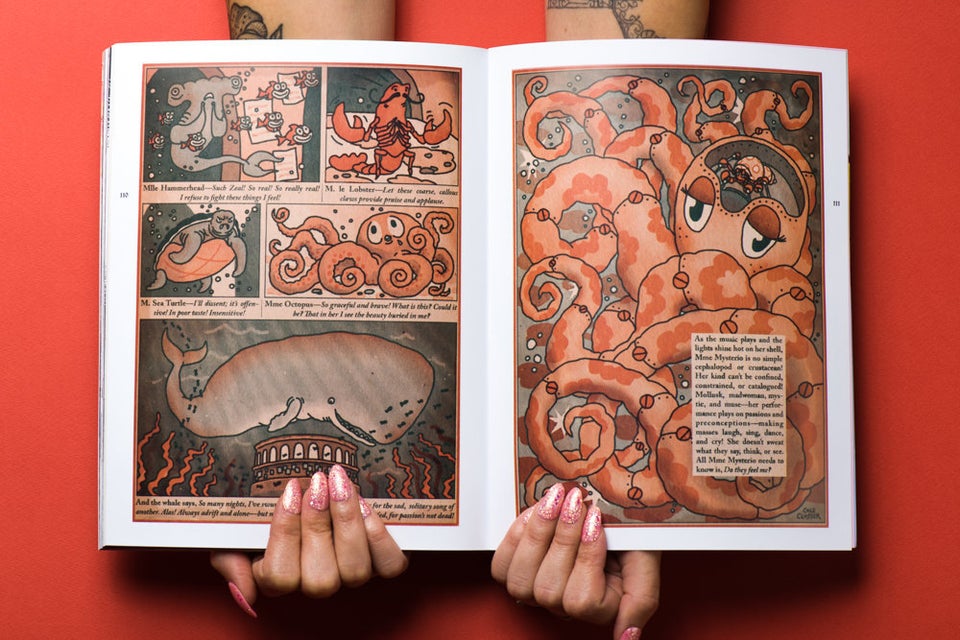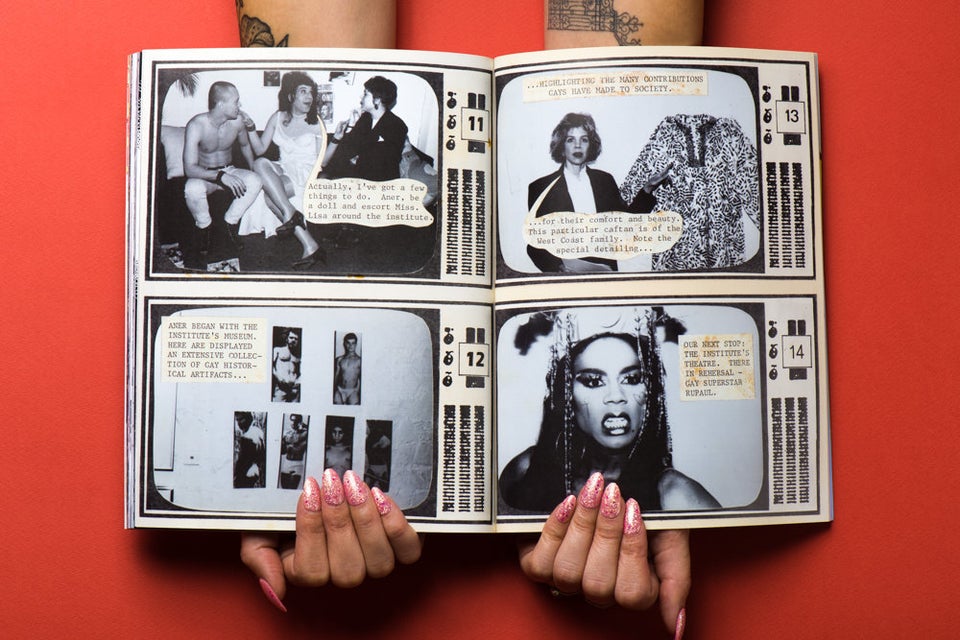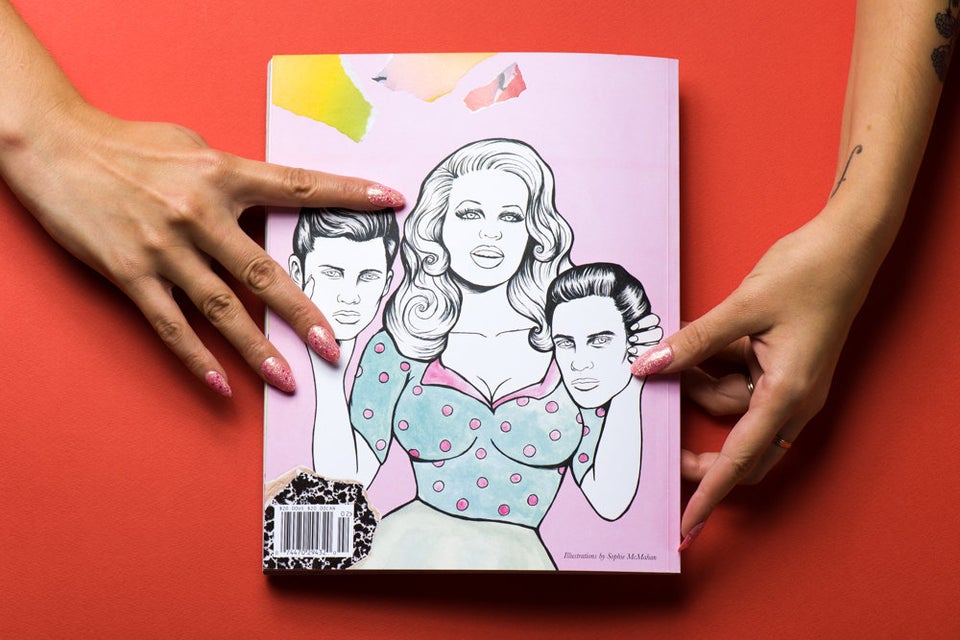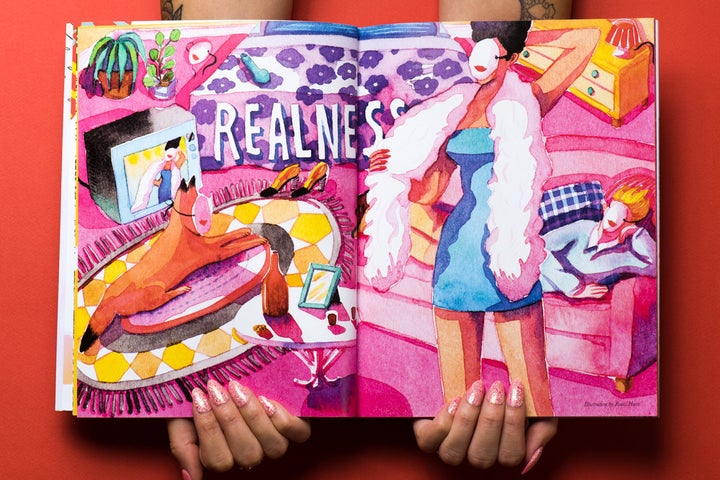
What is the state of drag in 2016?
While the success of “RuPaul’s Drag Race” has dramatically changed the public’s relationship with drag as an art form, this recent packaging for mainstream consumption doesn’t erase the rich and complex history of drag performance. This idea, among others, is what artist Sasha Velour explores in the second issue of her drag magazine, appropriately titled Velour, created alongside her boyfriend and creative partner Johnny Velour.
This second edition of the queer publication is called “Realness,” a seminal term from the world of queer performance that has taken on new cultural meaning in recent years. As Velour sees it, the word, in many ways, has become synonymous with “look” as a colloquialism. However, to not consider the word’s origins is an erasure of the queer people of color who largely popularized the word through different categories in underground ball scenes.
“’Realness’”categories in the black and latinx ballroom world were really more about ‘passing” than they were about costumes,” Velour Told The Huffington Post. “The ability to seem exactly like your straight (and sometimes white) counterpart. Not really for purposes of parody, but almost life or death survival. If someone, to quote Dorian Corey, can ‘walk out of that ballroom into the sunlight and onto the subway and get home and still have all their clothes and no blood running off their body... that’s realness.’ But the balls were also a safe and joyful space... a queer-run universe.”
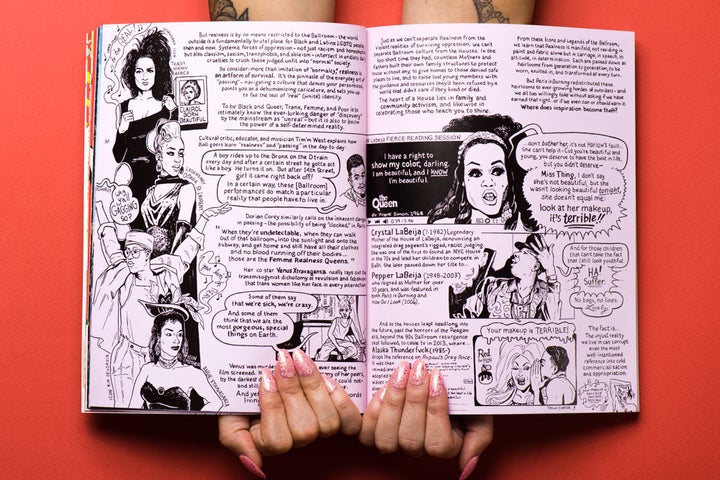
This consideration of the historical heart of drag and the way its developed and changed, particularly recently, is really at the heart of this issue of Velour. The magazine is an intricate 116-page collection of art, images, photos, stories and contributions from queer artists from around the world with a heavy focus on the Brooklyn drag scene. The features include Brooklyn scene staples like Merrie Cherry, Chris of Hur, Goldie Peacock, Pearl Harbor, Lady Quesa’Dilla and Lady Simon, as well as non NYC-specific figures like Sophie McMahan, Chad Sell from Illinois, Cole Closser from Missouri, and Rumi Hara from Japan.
“In a sense, working within your direct community is also part of the tradition of indie publishing,” Velour continued. “My favorite part of this issue was getting to scan and reprint excerpts of Linda Simpson’s 1988 issue of My Comrade (the original drag queen-run NY magazine!). It was INCREDIBLE to recognize such similar levels of dedication and also publishing-induced insanity when I was looking through the originals, all painstakingly collaged and xeroxed by her and her friends. We really aren’t inventing something new...we’re just continuing a pretty amazing legacy of queer publishing!”
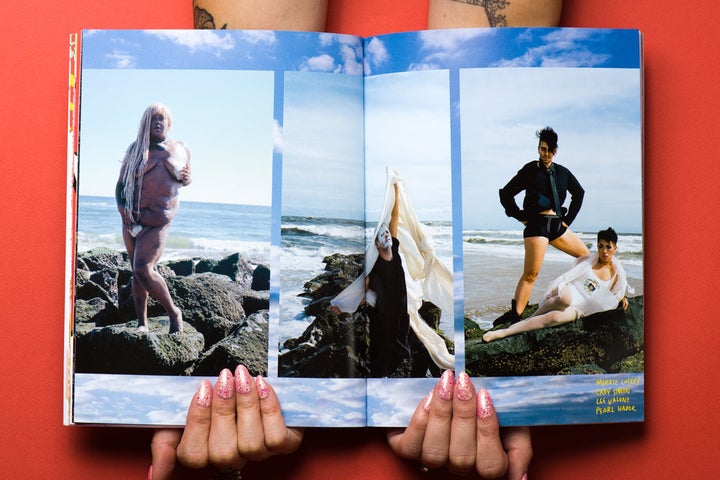
For Velour, this representation of different scenes and communities within the larger queer community is crucial, as drag is something that has historically bled into the very fabric of the queer fight for rights, representation and survival.
These queer and often drag-based concepts, such as “realness,” help us to better understand both the nuances and functionality of society but also allow us to examine ourselves and our relationship to it.
“And that’s how drag goes about being revolutionary,” Velour continued. “Not by trying to create something ‘outside of reality’ ― but by remixing, reorganizing, recasting the rules around you until new very real possibilities emerge.”
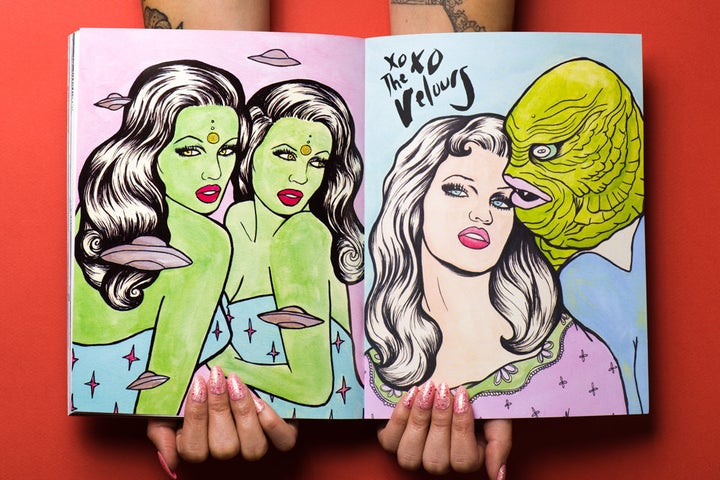
As for Velour magazine, the artist told The Huffington Post that she hopes it not only continues the tradition of queer publishing established by queer artists over the years, but also serves as a tool for queer people to better understand our relationship with drag ― and its history ― as it becomes increasingly mainstreamed.
“I really think that this magazine has a message of positivity... that drag is smart, diverse, and beautiful, that it truly can (and has) changed the world.” Velour said. “And this may seem silly but I think the beautiful aesthetics of the magazine are a reminder and a promise that we queer people can have nice things... not because of money or resources, but because we have determination and good ideas! And that’s what drag is all about.”
“Realness” and the first issues of Velour called “What is Drag”? Are both available here as of October 21.
Check out other selected images from the “Realness” issue of Velour below.
